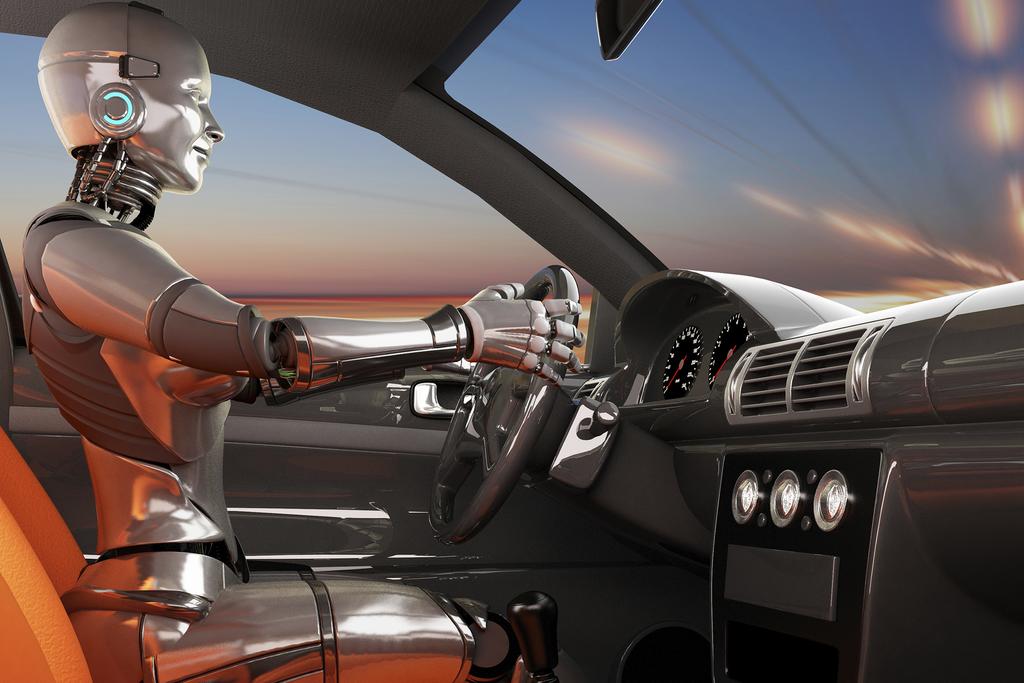
Sooo ... you know that once-far-off future of fully automated, self-driving cars? Well, it's almost here. And as the similarly automated alien-cyborg race from "Star Trek," the Borg, reminds those it assimilates into its hivelike collective: Resistance is futile. But according to a new study, motorists aren't going down without a fight.
Well, set our phasers to "not stunned."
Related: Google Cites Human Error in Driverless-Car Collision
The University of Michigan's Transportation Research Institute released a new report examining drivers' attitudes toward different levels of automated driving. The survey of more than 500 licensed drivers, conducted by researchers Brandon Schoettle and Michel Sivak, showed that an overwhelming majority of motorists are unwilling to hand over their vehicle's controls altogether to a machine. Attitudes have changed little in the year since the institute last studied the topic.
"Currently, as in the previous study, concern about riding in completely self-driving vehicles remains high," researchers stated.
Researchers gave survey participants three options: completely self-driving, meaning the vehicle will control all safety-critical functions, requiring no vehicle occupant at all; partially self-driving, in which the driver hands over control of all critical vehicle functions with only occasional participation; and no self-driving, meaning the driver always has total control, but is still assisted by advanced safety functions.
Forty-four percent of respondents said they prefer to retain full control of their vehicle when driving, while about 41 percent said they prefer partially self-driving vehicles with only occasional driver engagement. Only 16 percent favored ceding all control. Meanwhile, two-thirds of those surveyed indicated being at least moderately concerned about riding in fully automated cars, though just half that percentage held the same concerns about partial automation.
A survey of the Cars.com editorial department yielded somewhat similar numbers, with some notable differences. Forty percent of our staff favored "partially self-driving" vehicles, while "no self-driving" capability was the preference of 35 percent; "completely self-driving" cars were preferred by 25 percent.
Broken down by groups, males and younger people were more likely to favor partially or completely self-driving cars, UMTRI's survey revealed. Women and older people were more likely to have misgivings about any level of automation. Still, even among those favoring full and partial automation, skepticism endures. The study concluded that nearly all survey respondents would want to have a steering wheel, and gas and brake pedals, available even in completely self-driving vehicles.
While attitudes vary on the level of autonomous driving people are willing to accept, for some the whole thing just makes them sick — literally. A separate study by the Transportation Research Institute earlier this year determined that motion sickness was likely to be a greater problem for the occupants of fully automated vehicles. Researchers surveyed 3,200 adults in the U.S., India, China, Japan, Great Britain and Australia.
"Motion sickness is expected to be more of an issue in self-driving vehicles than in conventional vehicles," Sivak said in a statement. "The reason is that the three main factors contributing to motion sickness — conflict between vestibular (balance) and visual inputs, inability to anticipate the direction of motion and lack of control over the direction of motion — are elevated in self-driving vehicles."
The good news is that drivers likely will be able to mitigate the frequency and degree of motion sickness by abstaining from activities that aggravate the condition, such as reading, texting, watching TV, playing games or working. The bad news is that more than a third of Americans surveyed identified those activities specifically as ones they'd engage in, resulting in 6 to 12 percent of them suffering motion sickness at some point, the study states. Activities not expected to cause motion sickness include watching the road, talking on the phone and sleeping.
Researchers said driverless-vehicle manufacturers could combat motion sickness by maximizing the visual field with large, transparent windows; mounting transparent, forward-facing video and work displays; restricting head motion; and installing fully reclining, non-swiveling seats.
No comments:
Post a Comment